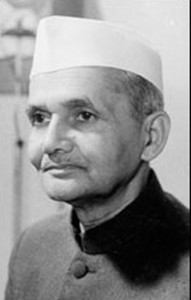Brahmotsavam is a celebration of nine days at the temple of Lord Sri Venkateswara at Tirupati. This temple is cleaned according to the guideline given in the religious texts. It is decorated with flowers and mango leaves.
The significance of each day ritual and holy celebration are … :
Day1: Pedda Seshavahana:
The first day of Brahmotsavam is commenced with the hosting of Garuda Dhwaja(A religious flag, with the sign of Eagle on it), It is followed by a panoramic procession of Lord Venkateswara around the temple. This event starts at 10pm and continues till midnight. The vehicle on which the Lord Venkateswara is carried is called Pedda Seshavahana and is believed to be the manifestation of Adisesha (The thousand-headed serpent, on whom Lord Sri Maha Vishnu rests in his abode). The magnanimous march lasts for the first two day of Brahmotsavam.
Day 2: Chinna Seshavahana
The second day starts with the Lord’s procession, this time on Chinna Seshavahana. Whole day deities are worshipped and in the night they are taken to the Uyala Mandapam for the Unjal Seva. The day slips away in the worship of the Lord and in the night the deities are taken to the Uyala Mandapam for the Unjal Seva (swinging). This is followed by procession on a Hamsavahana through the temple streets. It is believed that Hamasavahana signifies purity, and the Hamsa (swan) on it is known to for it is ability to differentiate between good and bad, and said to denote peace.
Day 3: Simhavahana
Simhavahana performed on third day. On this day deities are carried on Simhavahana- a vehicle with lion’s emblem on it that denotes command and authority. It is considered that Lord assumes the form of Narasimaha (a mythological character who was half human and half lion) to kill the demon named Hiranyakasipu. After the procession the deities are once again taken to the Unjal Seva followed by an exciting ride on Mutayalapandri Vahana; the symbol of purity.
Day 4: Kalpavriksha Vahana
The fourth day comprises of two processions, one on the Kalpavriksha Vahana in the morning followed by a procession on Sarvabhoopala Vahana in the night. According to legend, Kalpavriksham is name of a tree that grants boon
Day 5: Garuda Vahana or Mohini Avatarotsavam
Garuda Vahana or Mohini Avatarotsavam is celebrated on the fifth day to commemorate the lord’s incarnation as Mohini to assist the Devtas during Ksheerasagarmadhanam.
In the Vaishnava Puranas, Garuda is also called periyatiruvadi, meaning the first devotee. Therefore, Lord Venkateswara selected Garuda as his vehicle for the most important day of the Brahmotsavam.
Day 6: Gaja Vahana
On sixth day, Gaja Vahana is celebrated, it is believed that in the night Lord mounted on the Gaja Vahana(elephant).
Day 7: Suryaprabha Vahana
On the seventh day of Brahmotsavam, Lord rides on Suryaprabha Vahana. According to Hindu Mythlogy Lord Vishnu is believed to be the center of the universe. To symbolize this, Lord Venkateswara uses the Suryaprabha(light of the Sun).
Day 8: Rathotsavam
The Lord is taken on a procession seated on a chariot known as Rathotsavam on the eighth day of Brahmotsavam. The idols of Lord Sri Krishna and the four horses are placed before the decorated idols of the Lord and his consorts.
Day 9: Chakrasnana Mahotsavam
On the last day, Pallaki Seva and Chakrasnana Mahotsavam in the morning and Dhwajavarohanam are performed in the evening. The processional images are anointed with turmeric powder, oil and other auspicious ingredients and Abhishekam is performed. Sudarsan Chakram is given a bath in the Swami Pushkarini. The Garuda flag is then lowered.
This year Tirumala Brahmotsavam festival is celebrated on 9th to 18th October 2010 at Tirupati. Lakhs of tourist and pilgrims pay holy visit at Tirupati Tirumala Brahmotsavam Festival every year. May Lord Venkateswara call you to make the holy pilgrim this year.
Toshali Travel and Tours offers budget festival Holiday packages and arranges exclusive accommodation for Tirumala Brahmotsavam Festival at Tripati on demand, click on http://bit.ly/bRcZKo . Toshali Travel and Tours is authorised Travel and Tour Operator, recognized and accredited by Ministry of Tourism, Government of India
To know more on the Tirumala Brahmotsavam Festival at Tripati pilgrim package, post you comments or Contact our Toshali Holiday Planner at metu@toshali.in
Do post your comment and suggestions, if you feel we have left out any information that would be helpful for your friends, family members. Also share this blog with Facebook, Twitter, Orkut and other Social Networking sites….
